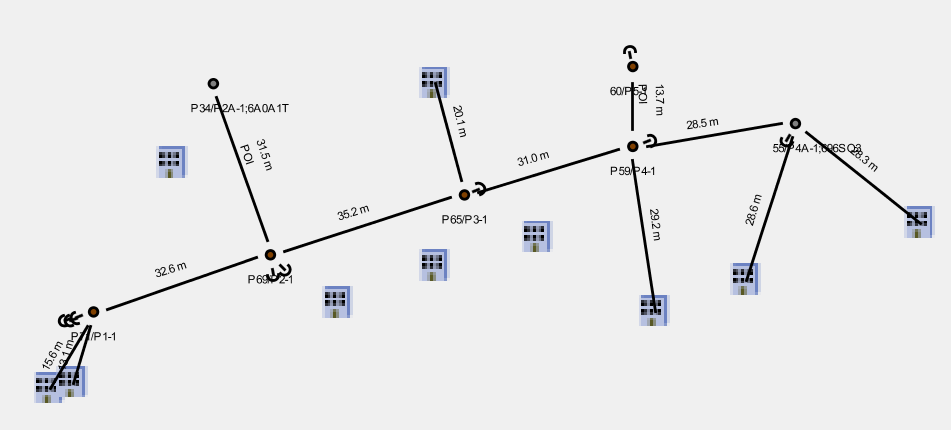About Quick Pole
Quick Pole is an industry-specific Civil and Structural Engineering software tool used to assess strength, clearance and separation requirements of Distribution Pole Lines according to National Codes and the standards of Utilities.
Quick Pole provides a clear and efficient user interface that streamlines the analysis process, while carefully limiting user options (on purpose) so that only code compliant designs will be generated. Another key feature of Quick Pole is that it supports the Due Diligence requirements of designers and professional engineers. All analysis results are defend-able based on solid engineering principles and use advanced engineering techniques.
Quick Pole uses Finite Element methodology for both structural analysis and sag/tension calculations, making it one of the most sophisticated software tools on its kind in the market today.
Quick Pole Overview
Quick Pole is a software tool that is used to help validate the design of pole line networks, the submission of attachment permits and the creation of corporate standards. It provides the means to address a wide range of criteria related to safety and code compliance. Support is currently provided in Quick Pole to address many specific requirements of the National Electrical Safety Code® (NESC), General Order 95 (GO 95) and/or Canadian Standards Association (CSA). A detailed review of what specific clauses in these standards are addressed by Quick Pole is available through the verification section of our website; which is updated from time to time. To be super clear, Quick Pole will not address all design requirements from the applicable standards; nor is it possible to do so with a program alone without Designer involvement. Quick Pole does however address a considerable percentage of the requirements and highlights areas that have deficiencies.
Through the creation of a Quick Pole project, many factors are calculated automatically and presented to the user in summary form, highlighting any issues that may require more detailed attention. At a high level, Quick Pole performs the following major functions:
- Assess the structural capacity of poles and their anchoring devices using either Linear or Non-Linear Analysis,
- Calculate Sags, Tensions and other Attachment loads applied to the poles,
- Can consider multiple Load Cases,
- Calculate clearances of attachments over land and other locations,
- Calculate Joint Use separations for pole attachments,
- Document existing and proposed pole line situations and assists in capturing Make Ready requirements.
- Enables Users to collect and share databases of standards such as corporate standards or those of other Utilities.
Features
Quick Pole was designed from the ground up to handle the analysis of multiple poles at the same time. This not only saves time, but reduces the chance of error that span lengths, angles and attachment heights could be entered incorrectly. The predecessor product to Quick Pole handled poles individually, which proved to be error prone for span angles and lengths due to different perspectives of the poles in question.

Quick Pole was designed with GIS capabilities (including data import/export), but can also support projects without any GIS data or reference points. Regardless of whether your pole and attachment data is captured on a piece of paper or electronically, with or without GIS references, Quick Pole can perform its full function.
Quick Pole uses advanced calculation methodologies and proprietary algorithms. The most notable items are:
- Non Linear Structural Analysis of Poles.
- This includes what is commonly known as the P-Delta effect.
- Full Geometric Non-Linearity Analysis ( example:. guy directions change as the pole deflects and need to be re-modeled for accurate results)
- Load Non-Linearity (change in tension/load of attached wires due to structure deflection, plus their change in angle)
- Sag and Tension Calculations
- Material nonlinearity taken into account (Best in Class)
- Handles material permanent stretch (plastic elongation) under both maximum load and due to Creep.
- Handles two-metal conductors
- Handles Cables with metallic or dielectric support members
- Handles Spaced Aerial Cables and other wire configurations
- Bundling of Communication Wires and cables onto messengers under tension in one step
- Self-Supporting Cables and wires. (ADSS, OPGW…)
- Soil Strength Analysis
- Intuitive Reports and Displays of final results.